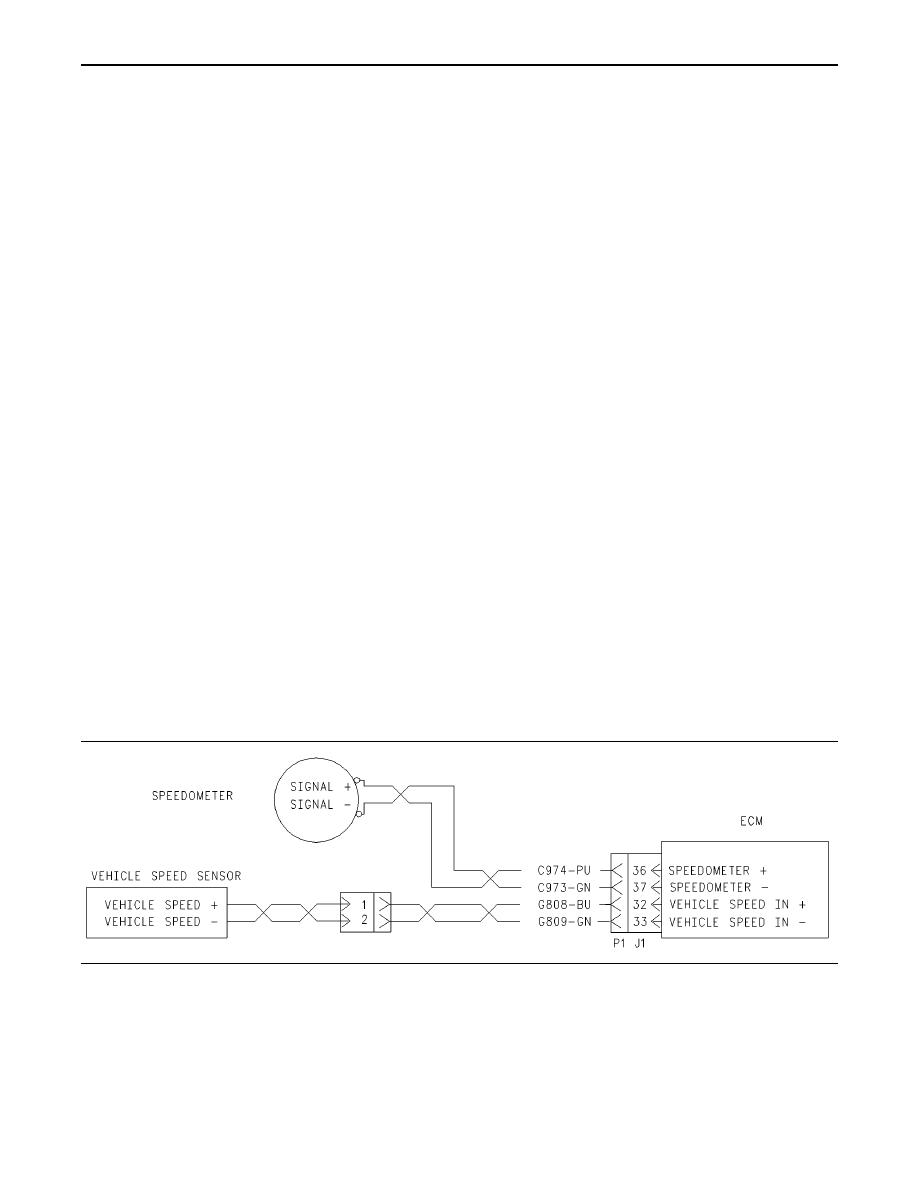 |
|||
|
|
|||
|
Page Title:
Illustration 181 Schematic for a single coil speed sensor and an ECM driven speedometer |
|
||
| ||||||||||
|
|
 410
TM 9-2320-312-24-2
Troubleshooting Section
With SEP00 and newer software, the ECM can be
configured to receive vehicle speed information
from an Electronic Transmission Control Unit via the
J1939 data link. The transmission must be capable
of supporting the "J1939 ETC1 Broadcast Message
(PGN 61,442 Bytes 2 & 3)". This message provides
the speed of the transmission output shaft. This
feature requires the hardware for the J1939 data
link to be installed in the chassis of the vehicle. This
also requires a transmission that is electronically
controlled and capable of supporting the necessary
J1939 protocol.
When the engine is configured for the J1939
option, the circuit for the ECM vehicle speed input
(terminals 32 and 33) will be ignored. The ECM uses
the "Vehicle Speed Cal (J1939-Trans)" parameter
value in order to calculate vehicle speed. The ECM
uses the parameter value and the speed of the
output shaft that is received over the J1939 data
link to calculate the vehicle speed. The "Vehicle
Speed Cal (J1939-Trans)" parameter is based on
the revolutions per mile of the output shaft. There
are several methods that can be used to arrive
at this calibration value. Refer to Troubleshooting,
"Vehicle Speed Circuit - Calibrate" for details.
Regardless of the source that is used to determine
vehicle speed, the ECM uses the calculated value
for the vehicle speed in the same manner to control
several features and functions. The diagnostics for
vehicle speed function very similarly when either a
hard-wired signal is provided to the ECM from a
speed sensor, or a message is sent to the ECM via
the J1939 data link. If the ECM detects a loss of
vehicle speed or a value that is invalid, a fault code
will be logged in order to alert the operator or the
technician of the presence of a problem.
g00643046
Illustration 181
Schematic for a single coil speed sensor and an ECM driven speedometer
|
|
Privacy Statement - Press Release - Copyright Information. - Contact Us |